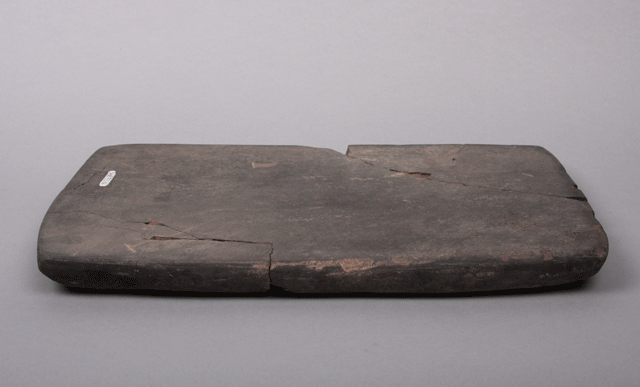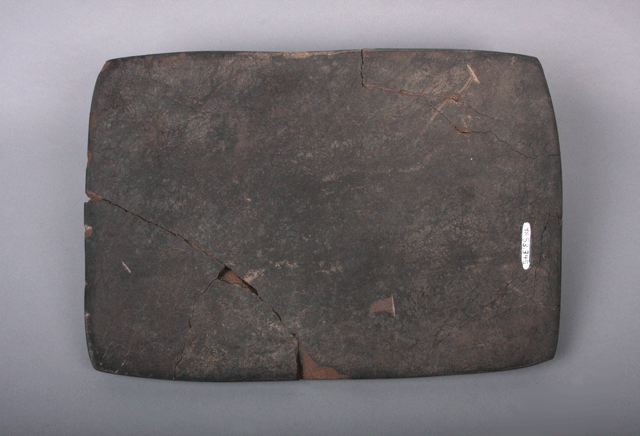

98.53.345, piki stone, 40 centimeters (16 inches) long
Pottery Mound, New Mexico (A.D. 1350–1490)
UNM field school collection
Photograph by B. Bernard
"Piki" is a Hopi word for a special bread prepared by dipping
a hand into a batter of finely ground blue corn, then spreading the
batter on a specially prepared, extremly smooth stone griddle, in
a layer about as thick as a sheet of paper. Once the batter has
cooked and dried, but before it becomes stiff, the cook rolls the
resulting sheet of unleavened cornbread into a roll. The piki is then
set aside to dry completely. It takes great skill to spread the piki on
the heated griddle, and then retrieve it, all with bare fingers.
Piki is sometimes compared to corn flakes but the ash used to prepare the batter gives it a slightly astringent taste, and the texture is more like that of single layers of puff pastry. Traditionlly, piki was made at a number of the Pueblo Indian villages in the U.S. Southwest. Today it is most common at the Hopi villages, where it most likely originated.
For a photograph of piki being cooked, including a bowl of the blue corn batter, please click here. To see some completed piki (on a Hopi woven platter), please click here.
The piki stone in this virtual exhibit was found at a prehistoric Pueblo village a few miles west of the Rio Grande, near Los Lunas, and testifies to the early widespread popularity of piki in the Pueblo world. The next photograph shows another view of the stone. The white patch is where a curator added the catalogue number for the stone. Given the reverence that many Pueblo people show towards these stones, we wouldn't put a museum number on the working surface of a piki stone today.

Second view of 98.53.345, piki stone
Photograph by B. Bernard
Help us build the content of this page! Please contact us about
information you'd like to see, information you have, and anything else
via the User Feedback link.
To return to the thumbnail on the Tools page, please click here.
All content copyright © Maxwell Museum of Anthropology, University of New Mexico. A high-resolution verson of this photograph may be ordered from the Maxwell Museum's photo archives. Please make note of the catalogue number. For more information please visit the photo archives web page
Page last revised on August 26, 2009. Please report problems to toh@unm.edu